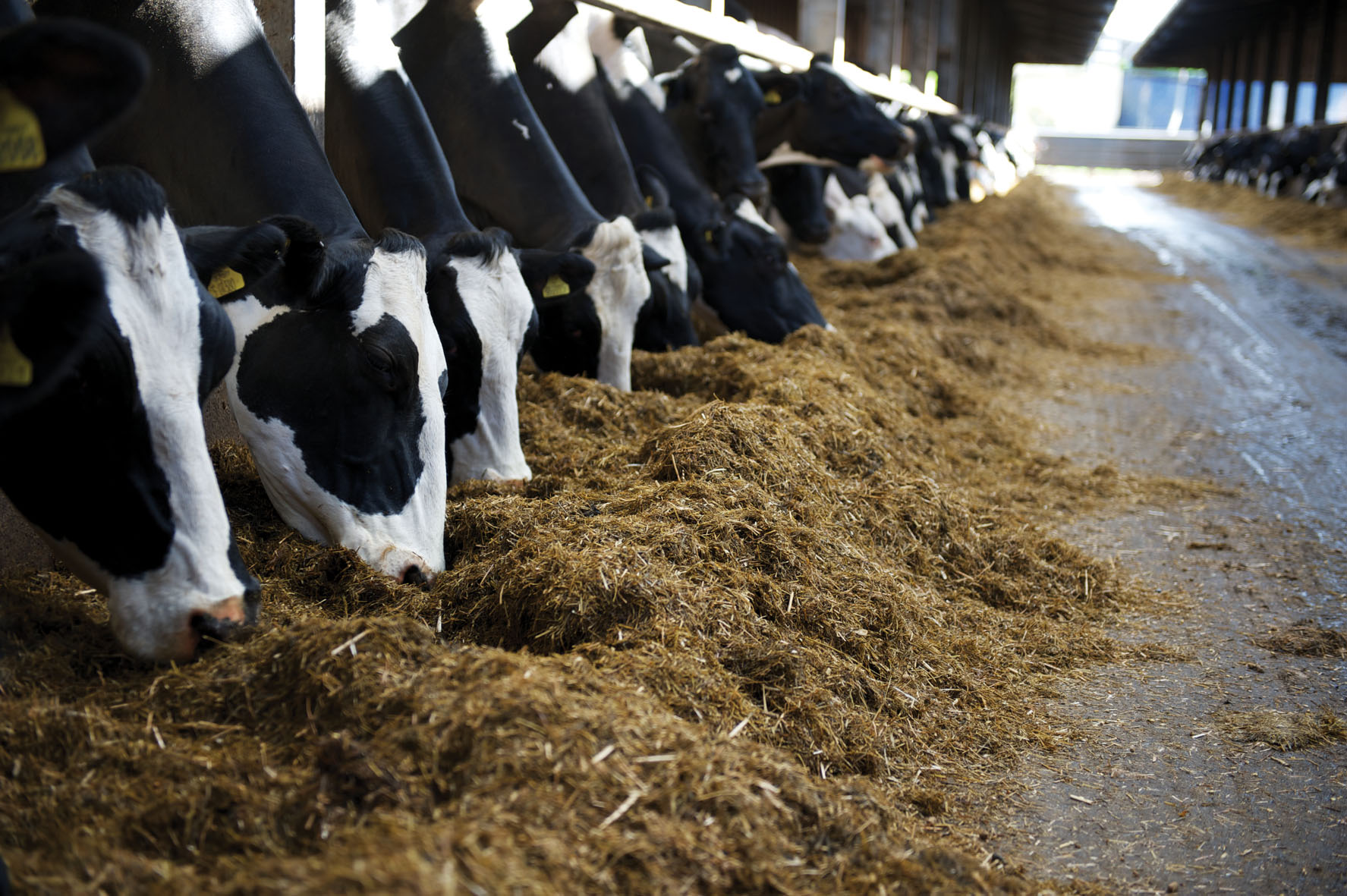Many farmers had to house stock early and so have already used up forage intended for the coming winter. At the same time a significant proportion of farms have struggled to conserve enough forage for their winter feed budget. And the quality of much conserved silage is low - a triple whammy! This is an extremely worrying development as good quality grass silage normally constitutes a large proportion of the basal diet for beef and dairy farmers, because of its cost effectiveness.
Early silage analyses show that grass harvested in early May is well fermented, and has high digestibility, metabolisable energy and protein. However, in general grass ensiled from June onwards has poorer fermentation characteristics (low pH and high PAL readings) higher fibre, lower metabolisable energy (ME) and reduced protein content. Lignin levels are also higher than normal. Such silages will have poor intakes, provide less energy and protein, and could lead to rumen acidosis.
So, what can farmers do to mitigate the lack of forage and poorer quality silage? In the short term a “do-nothing” attitude could be very costly, resulting in:
• Insufficient forage to last through the winter
• Increased purchased feed costs
• A need to feed too much cake/compound and a risk of acidosis and laminitis
• Poorer daily live weight gain and longer finishing period in beef cattle
• Reduced milk yield and reduced milk solids in dairy cows
• Increased negative energy balance and so poorer fertility at the start of the next lactation
Added to the above, the spiralling cost of straights will make the cost of compound feed more expensive. What options can you take:
1. Reduce stock numbers
2. Reduce yield expectations
3. Feed more compound feed/cake
4. Purchase grass or forage silages
5. Purchase other feeds such as straights or brewery byproducts
6. Use a feed additive to improve feed efficiency
Options one and two are not very attractive to most so we’ll concentrate on the alternatives...
Feeding more compound feed
For many people this may be the only option. The table below gives an example of this:
Compound feed required to sustain 30 litres based on differing silage quality
|
Silage type |
Silage intake (kg DM) |
Energy intake from silage (MJ ME) |
Compound required for 30 litres |
|
High Quality - normal year |
12 |
138 |
9kg |
|
Poor Quality - this year |
9 |
90 |
13.25kg |
As the table shows, an addition 4.25kg of concentrate per cow per day is required to maintain yield level if silage quality is lower. At £275 (€344) per tonne this represents an additional cost of £1.17 (€1.46)/cow/ day. However the additional 4.25 kg of compound will produce 9.25 litres of milk, which equates to £2.40 (€3) @ 26p (€0.32) per litre, and so more than pays for itself.
Purchase other feeds
It is essential to have around 40 per cent of the diet as forage and so calculations on forage requirements should be made based on this. Also, silage is very variable in quality, so it is imperative that it is analyzed before purchase. This way, its value relative to compound feed can be assessed.
The table below illustrates the relative value of grass silage per tonne at varying dry matter and ME values when compared to compound feed. This shows that it can vary from £19 (€20) to £44 (€55) – a huge difference. It pays to analyse! A similar exercise can be done to evaluate maize silage, wholecrop, beet pulp, straights etc.
This table compares a 12% protein silage with a 22% protein compound (11.3 ME, 87% DM) which costs £275/tonne. Note - these are relative values, NOT recommended prices that a farmer should pay!
Relative value of grass silage per tonne fresh weight compared to compound feed
|
|
MJ ME/kg DM |
|||
|
DM % |
9.5 |
10 |
10.5 |
11 |
|
15 |
£19 (€24) |
£20 (€25) |
£21 (€26) |
£22 (€27) |
|
20 |
£26 (€33) |
£27 (€34) |
£28 (€35) |
£30 (€37) |
|
25 |
£31 (€39) |
£33 (€41) |
£35 (€43) |
£36 (€45) |
|
30 |
£38 (€48) |
£40 (€50) |
£42 (€52) |
£44 (€55) |
Purchasing silage which has not been analysed is a big risk as you don’t know what you are paying for!
Improving feed efficiency
Actisaf Sc 47 live yeast has proven to be highly beneficial for dairy cows and beef cattle being fed poorer quality grass silage. It has a number of benefits. It stimulates the beneficial rumen microflora thus improving fibre digestion, which improves intakes. It reduces acid production, something that is beneficial particularly if more compound feed has to be fed, and it overcomes the effect of the lactic acid in low pH (high PAL) silage. Overall this reduces the risk of acute or sub-acute rumen acidosis, thus improving feed efficiency and reducing laminitis, excess weight loss and associated infertility.
Summary
Grass silage availability and quality will be a major issue this winter, so begin to calculate requirements and options now. Purchase silage on its relative feed value based on a silage analysis rather than at face value. Don’t underfeed cows to reduce costs - additional compound feed will pay for itself in terms of improved yield and fertility. Using an additive such as Actisaf Sc 47 will improve the digestibility of fibrous silage, reduce the risk of acidosis and laminitis from acidic silage and/or from high levels of compound feeding.

